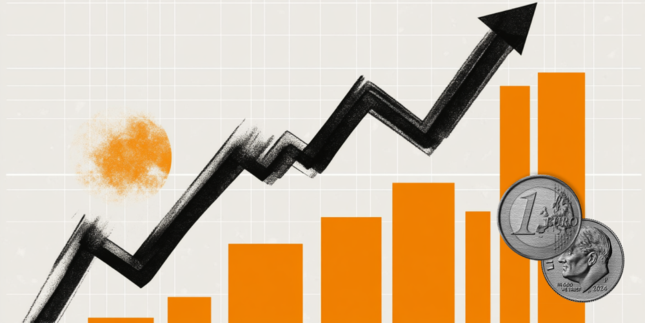- USD/CHF gathers strength near 0.8525 in Tuesday’s early European session.
- The Swiss CPI rose 1.1% YoY in August; the Swiss economy grew 0.7% QoQ in Q2.
- Higher US Treasury bond yields underpin the Greenback, but firmer Fed rate cut bets might cap its upside.
The USD/CHF pair extends its upside amid the firmer US Dollar (USD) around 0.8525 during the early European trading hours on Tuesday. The Swiss inflation was softer than expected in August, but the economy grew stronger than estimated. Investors brace for the US ISM Manufacturing PMI data, which is due later on Tuesday.
Data released by the Swiss Federal Statistical Office on Tuesday showed that the country’s Consumer Price Index (CPI) rose 1.1% YoY in August, compared to the previous reading of 1.3%. This figure was below the market consensus of 1.2%. On a monthly basis, the CPI inflation remains unchanged in August from a decline of 0.2% in July, softer than the expectation of a 0.1% increase.
Furthermore, Switzerland's economy grew at a faster rate than expected in the second quarter (Q2). The Swiss Gross Domestic Product (GDP) expanded by 0.7% QoQ, compared to 0.5% expansion in the previous reading, stronger than the estimation of 0.5%. However, the upbeat Swiss GDP growth data fails to boost the Swiss Franc (CHF) in an immediate reaction to the mixed readings.
On the USD front, higher US Treasury bond yields provide some support to the Greenback. However, the upside of the pair might be limited as traders expect the Federal Reserve (Fed) to cut interest rates in September. The US August Nonfarm Payrolls (NFP) report on Friday could offer more cues about the pace and size of the Fed rate cuts. Financial markets have priced in around 69% chance of a 25 basis points (bps) rate cut by the Fed in September, while the odds of a 50 bps reduction are standing at 31%, according to the CME FedWatch tool.
(This story was corrected on September 3 at 11:10 GMT to say that the Swiss economy grew 0.7% QoQ in Q2, not 0.7% YoY.)
Swiss Franc FAQs
The Swiss Franc (CHF) is Switzerland’s official currency. It is among the top ten most traded currencies globally, reaching volumes that well exceed the size of the Swiss economy. Its value is determined by the broad market sentiment, the country’s economic health or action taken by the Swiss National Bank (SNB), among other factors. Between 2011 and 2015, the Swiss Franc was pegged to the Euro (EUR). The peg was abruptly removed, resulting in a more than 20% increase in the Franc’s value, causing a turmoil in markets. Even though the peg isn’t in force anymore, CHF fortunes tend to be highly correlated with the Euro ones due to the high dependency of the Swiss economy on the neighboring Eurozone.
The Swiss Franc (CHF) is considered a safe-haven asset, or a currency that investors tend to buy in times of market stress. This is due to the perceived status of Switzerland in the world: a stable economy, a strong export sector, big central bank reserves or a longstanding political stance towards neutrality in global conflicts make the country’s currency a good choice for investors fleeing from risks. Turbulent times are likely to strengthen CHF value against other currencies that are seen as more risky to invest in.
The Swiss National Bank (SNB) meets four times a year – once every quarter, less than other major central banks – to decide on monetary policy. The bank aims for an annual inflation rate of less than 2%. When inflation is above target or forecasted to be above target in the foreseeable future, the bank will attempt to tame price growth by raising its policy rate. Higher interest rates are generally positive for the Swiss Franc (CHF) as they lead to higher yields, making the country a more attractive place for investors. On the contrary, lower interest rates tend to weaken CHF.
Macroeconomic data releases in Switzerland are key to assessing the state of the economy and can impact the Swiss Franc’s (CHF) valuation. The Swiss economy is broadly stable, but any sudden change in economic growth, inflation, current account or the central bank’s currency reserves have the potential to trigger moves in CHF. Generally, high economic growth, low unemployment and high confidence are good for CHF. Conversely, if economic data points to weakening momentum, CHF is likely to depreciate.
As a small and open economy, Switzerland is heavily dependent on the health of the neighboring Eurozone economies. The broader European Union is Switzerland’s main economic partner and a key political ally, so macroeconomic and monetary policy stability in the Eurozone is essential for Switzerland and, thus, for the Swiss Franc (CHF). With such dependency, some models suggest that the correlation between the fortunes of the Euro (EUR) and the CHF is more than 90%, or close to perfect.
Information on these pages contains forward-looking statements that involve risks and uncertainties. Markets and instruments profiled on this page are for informational purposes only and should not in any way come across as a recommendation to buy or sell in these assets. You should do your own thorough research before making any investment decisions. FXStreet does not in any way guarantee that this information is free from mistakes, errors, or material misstatements. It also does not guarantee that this information is of a timely nature. Investing in Open Markets involves a great deal of risk, including the loss of all or a portion of your investment, as well as emotional distress. All risks, losses and costs associated with investing, including total loss of principal, are your responsibility. The views and opinions expressed in this article are those of the authors and do not necessarily reflect the official policy or position of FXStreet nor its advertisers. The author will not be held responsible for information that is found at the end of links posted on this page.
If not otherwise explicitly mentioned in the body of the article, at the time of writing, the author has no position in any stock mentioned in this article and no business relationship with any company mentioned. The author has not received compensation for writing this article, other than from FXStreet.
FXStreet and the author do not provide personalized recommendations. The author makes no representations as to the accuracy, completeness, or suitability of this information. FXStreet and the author will not be liable for any errors, omissions or any losses, injuries or damages arising from this information and its display or use. Errors and omissions excepted.
The author and FXStreet are not registered investment advisors and nothing in this article is intended to be investment advice.
Recommended content
Editors’ Picks

EUR/USD extends gains toward 1.1400 after German sentiment data
EUR/USD stretches higher toward 1.1400 in the European session after upbeat German business sentiment data. The pair's solid uptick could also be linked to the latest leg down in the US Dollar as concerns re-emerge over Trump's tariff plans with China and Japan.

GBP/USD holds firm near 1.3300 on intense US Dollar weakness
GBP/USD rises further to test 1.3400 in European trading on Thursday, snapping a two-day losing streak. Uncertainty over US President Donald Trump's tariff plans returns and sends the US Dollar sharply lower across the board, suporting the pair. Mid-tier US data awaited.

Gold price pushes back at selling pressure with Trump putting reciprocal tariffs back on the table
Gold price recovers from a two-day decline and traders around $3,335 now on Thursday after two days of firm selling pressure since it topped at $3,500 on Tuesday. President Trump released more comments from the Oval Office late Wednesday signaling that China may receive a new tariff rate in the next “two to three weeks”

Bitcoin Price corrects as increased profit-taking offsets positive market sentiment
Bitcoin (BTC) is facing a slight correction, trading around $92,000 at the time of writing on Thursday after rallying 8.55% so far this week. Institutional demand remained strong as US spot Exchange Traded Funds (ETFs) recorded an inflow of $916.91 million on Wednesday.

Five fundamentals for the week: Traders confront the trade war, important surveys, key Fed speech Premium
Will the US strike a trade deal with Japan? That would be positive progress. However, recent developments are not that positive, and there's only one certainty: headlines will dominate markets. Fresh US economic data is also of interest.

The Best brokers to trade EUR/USD
SPONSORED Discover the top brokers for trading EUR/USD in 2025. Our list features brokers with competitive spreads, fast execution, and powerful platforms. Whether you're a beginner or an expert, find the right partner to navigate the dynamic Forex market.



